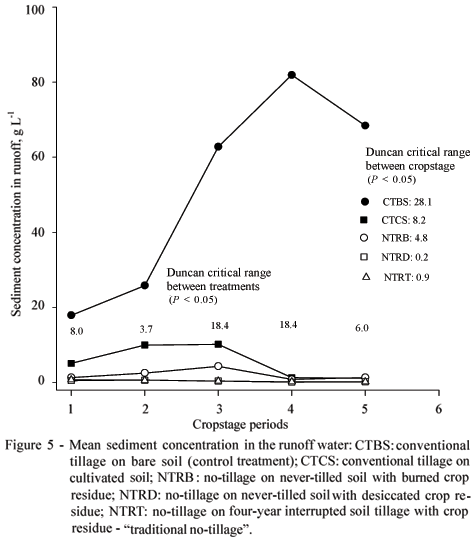Soil management influences soil cover by crop residues and plant canopy, affecting water erosion. The objective of this research was to quantify water and soil losses by water erosion under different soil tillage systems applied on a typical aluminic Hapludox soil, in an experiment carried out from April 2003 to May 2004, in the Santa Catarina highland region, Lages, southern Brazil. Simulated rainfall was applied during five soybean cropstages, at the constant intensity of 64.0 mm h-1. Treatments were replicated twice and consisted of: i) conventional tillage on bare soil - control treatment (CTBS), ii) conventional tillage on cultivated soil (CTCS), iii) no-tillage on non tilled soil with burned crop residue (NTRB), iv) no-tillage in non tilled soil with crop residue desiccated (NTRD), and v) no-tillage on four-years interrupted soil tillage with crop residue desiccated - "traditional no tillage" (NTRT). Regardless of soybean cropstages, water losses were the highest for the CTCS than for the untilled soils, while soil losses were considerably higher in the CTCS treatment only until cropstage 3, in cultivated soil treatments. The NTRT was most effective treatment in terms of both water and soil loss reduction. Water infiltration should also be considered, when considering the soil erosion process caused by rainfall and its associated runoff, due to the management systems usually adopted in cultivated fields.
soil cover; soil loss; water loss; soybean crop







